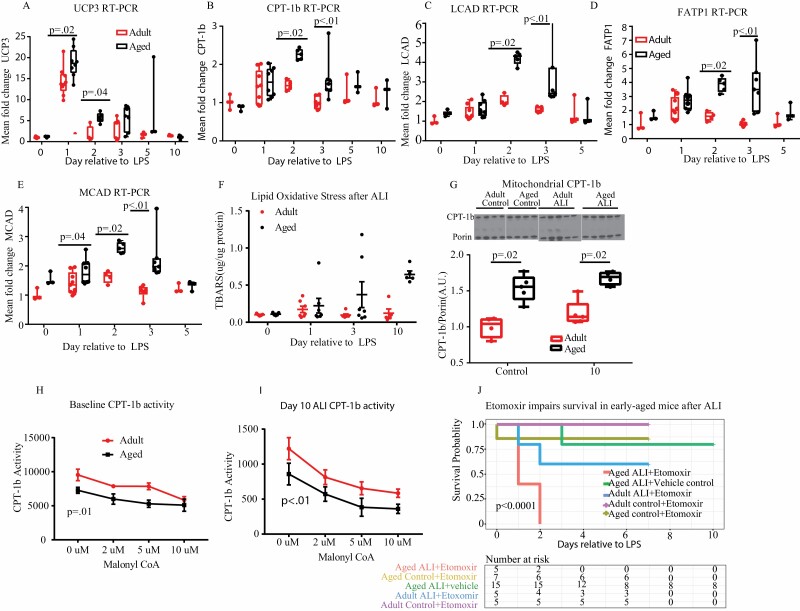Figure 3.
Comparison of fatty acid oxidation after ALI. (A–E) Transcription of key mediators of fatty acid oxidation (UCP3, CPT-1b, FATP1, MCAD, LCAD) was measured in gastrocnemius in aged and adult animals at baseline and after lung injury (group size 3–14 per time point). Transcription varied dynamically with IT-LPS. Aged mice consistently had higher transcription in early phase (day 1, 2, 3) ALI. (F) Oxidative stress was measured in skeletal muscle at baseline and after ALI by thiobarbituric acid reactive substance (TBARS) assay. No difference was seen at any time point (group size 5–7 per time point). (G) Mitochondrial CPT-1b protein expression was measured by western blot at baseline and day 10. Aged mice had increased CPT-1b expression at both baseline and day 10. Western blot was performed using 2 gels for electrophoresis. Same age baseline and day 10 injury were run on the same gel. (H) and (I) CPT-1b activity and malonyl inhibition were measured by radioassay at baseline and day 10 time points. Both aged and adult mice had increased CPT-1b activity at day 10 compared to baseline. Older mice had reduced activity when normalized for CPT-1 protein expression compared to younger animals. (J) Aged and adult mice were treated with either the CPT-1 inhibitor etomoxir or vehicle under control and ALI conditions. CPT-1 inhibition and ALI increased mortality in aged animals compared to vehicle or etomoxir alone. Aged ALI + vehicle control mice were sacrificed on day 10. All other conditions were sacrificed on day 7. All animals that survived to sacrifice showed signs of lung injury recovery.

